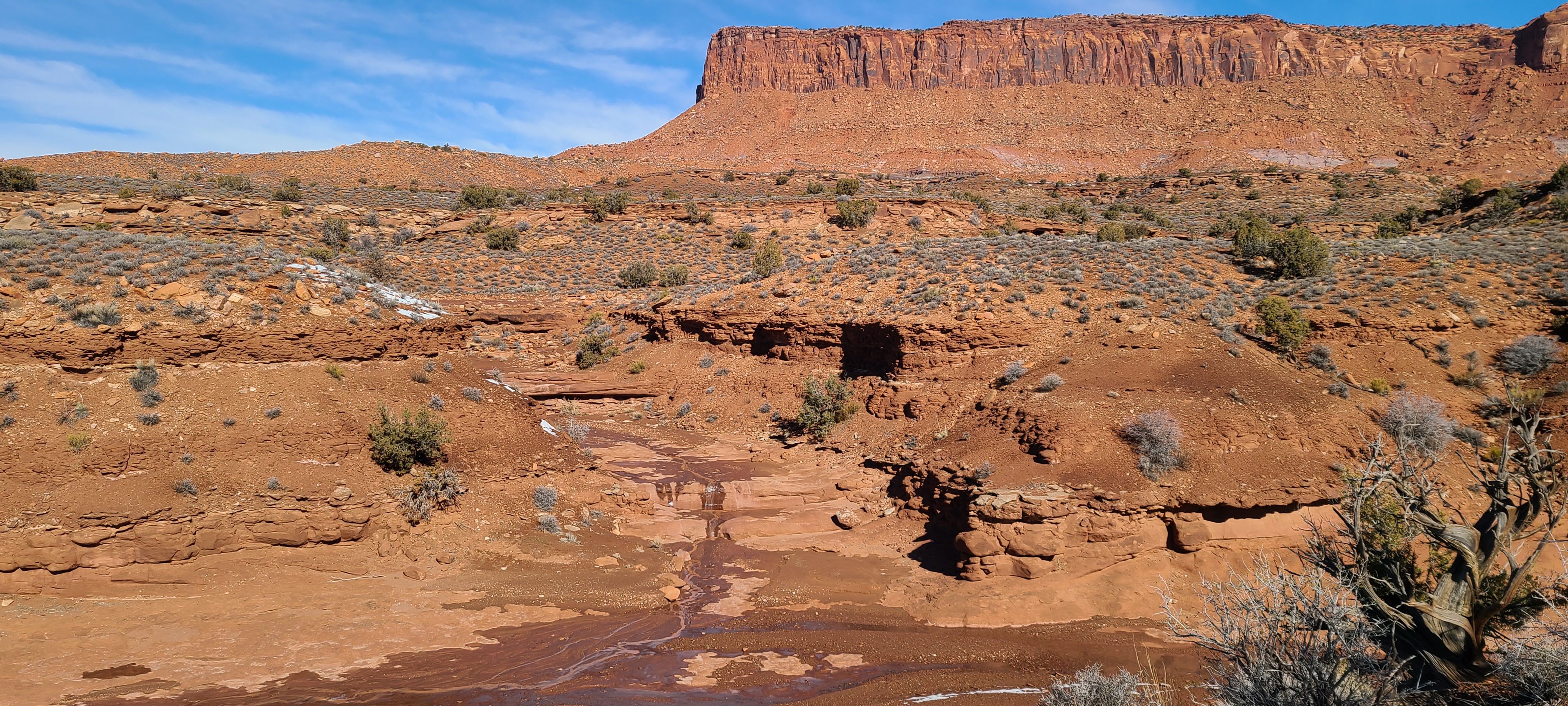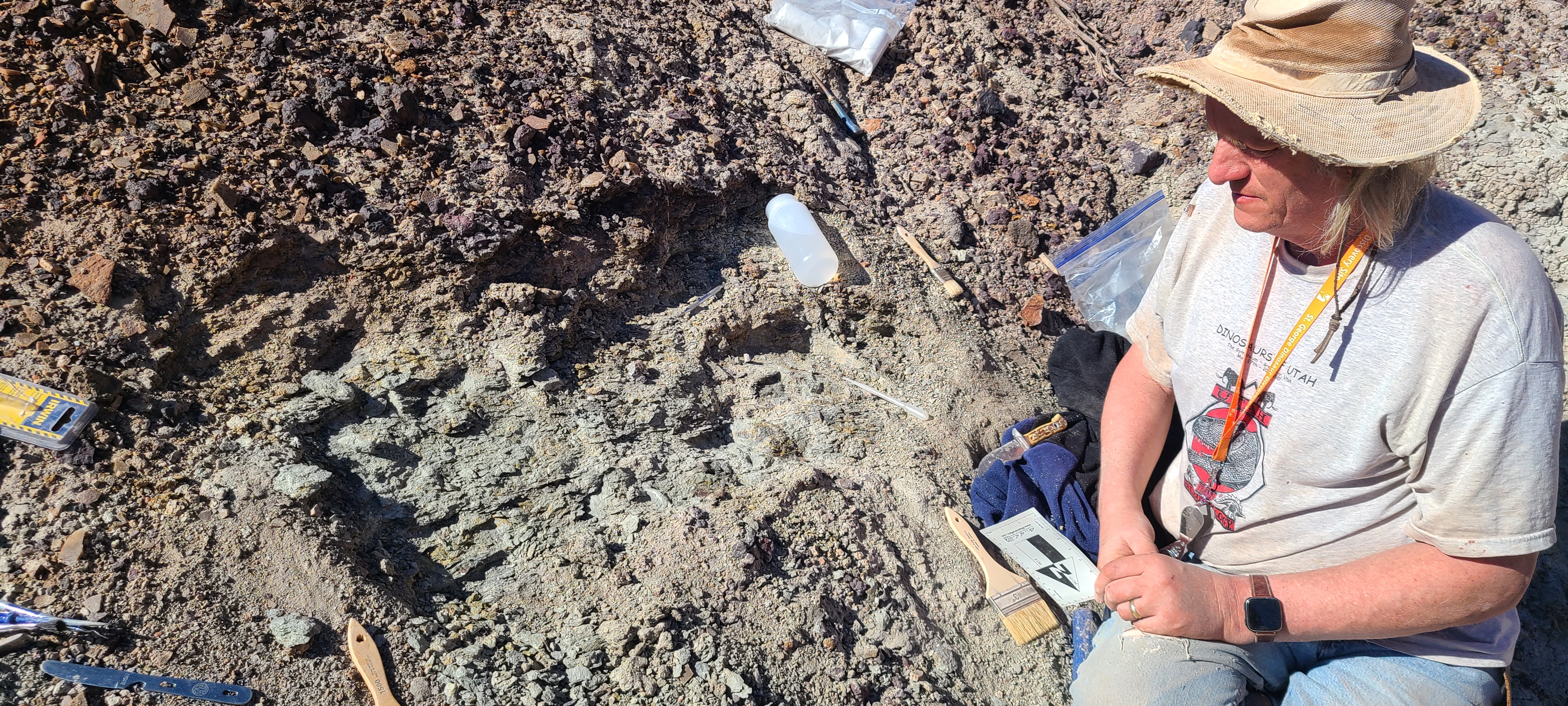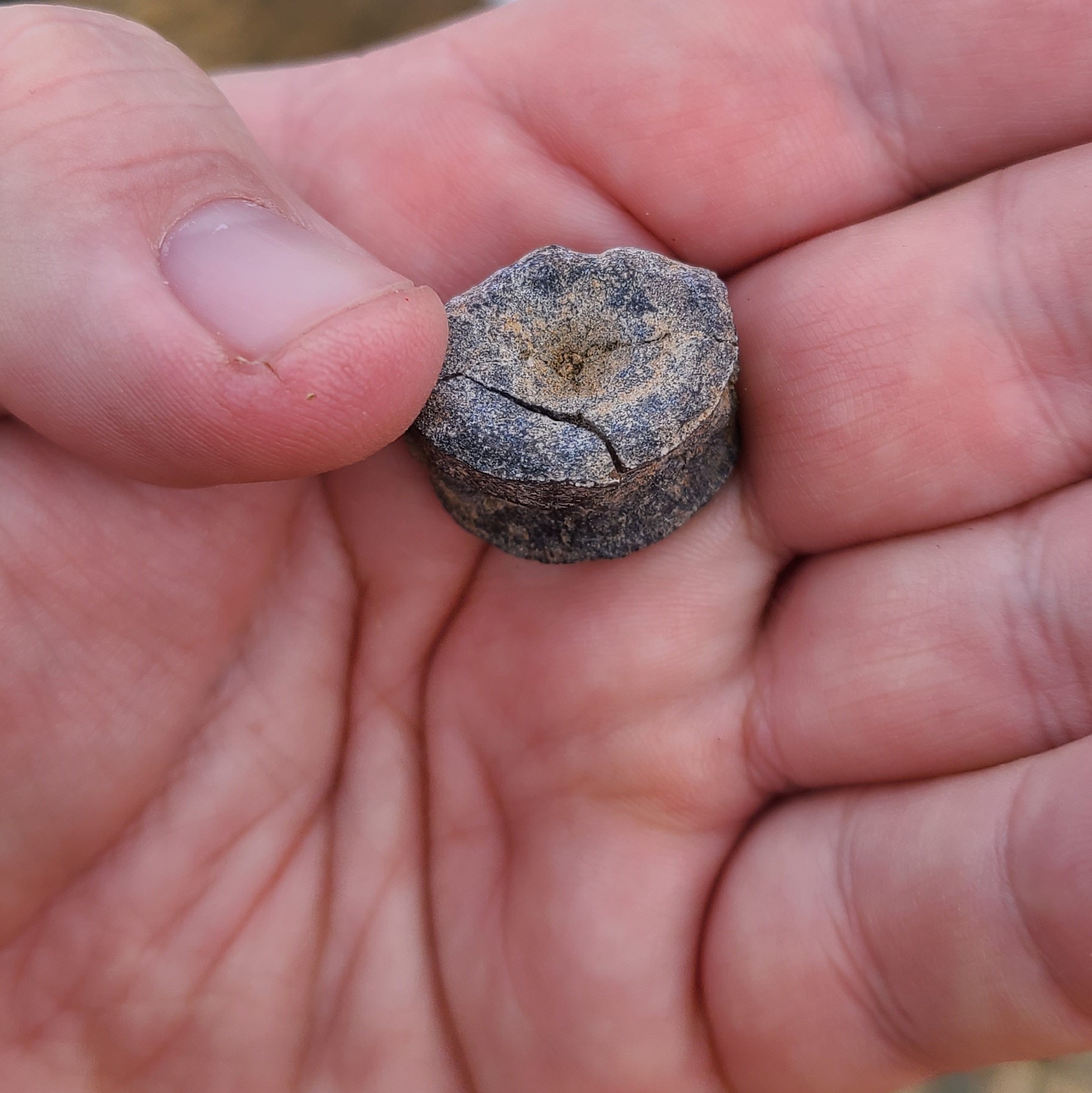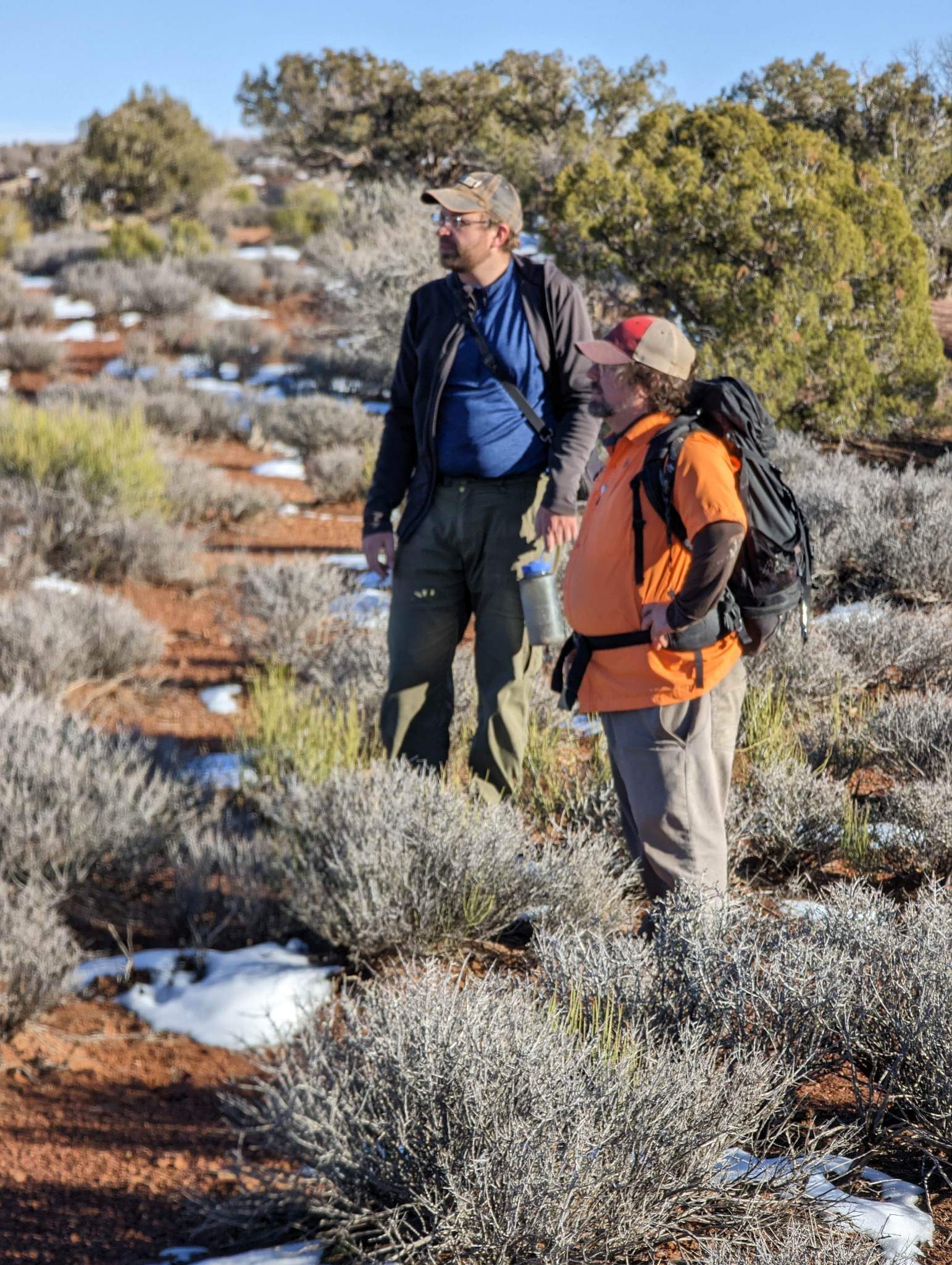Field Work in the Wild Heart of SE Utah

Idaho Museum of Natural History staff ventured to the wild heart of southeastern Utah to study rocks dating to the beginning of the Age of Dinosaurs.
From February 18th through the 21st, Idaho Museum of Natural History staff ventured to the wild heart of southeastern Utah, alongside a team of paleontologists from the Natural History Museum of Utah, the St. George Dinosaur Discovery Site, and Virginia Tech, all studying rocks dating to the beginning of the Age of Dinosaurs; the Triassic-aged (220-200 million-year-old) Chinle Formation.
The team had two objectives:
- Relocate and sample historic fossil sites in order to find small vertebrate fossils often overlooked
- Explore rocks not previously seen by paleontologists
Despite the temperatures dipping into the single digits at night and snow blanketing the outcrops, the team was able to meet these goals. Matrix (rock that holds fossils) was collected from several sites and is being processed at both the Natural History Museum of Utah and in the paleontology lab at the Idaho Museum of Natural History. The team also discovered the partial remains of a phytosaur (a crocodile-like reptile with a blowhole) deep in a desert canyon. This fossil is very low in the Chinle Formation, making it one of the oldest phytosaurs ever found in Utah. The team will be returning later this year to continue uncovering this skeleton and continue the search for more traces of life from the deep past.
Image Gallery






